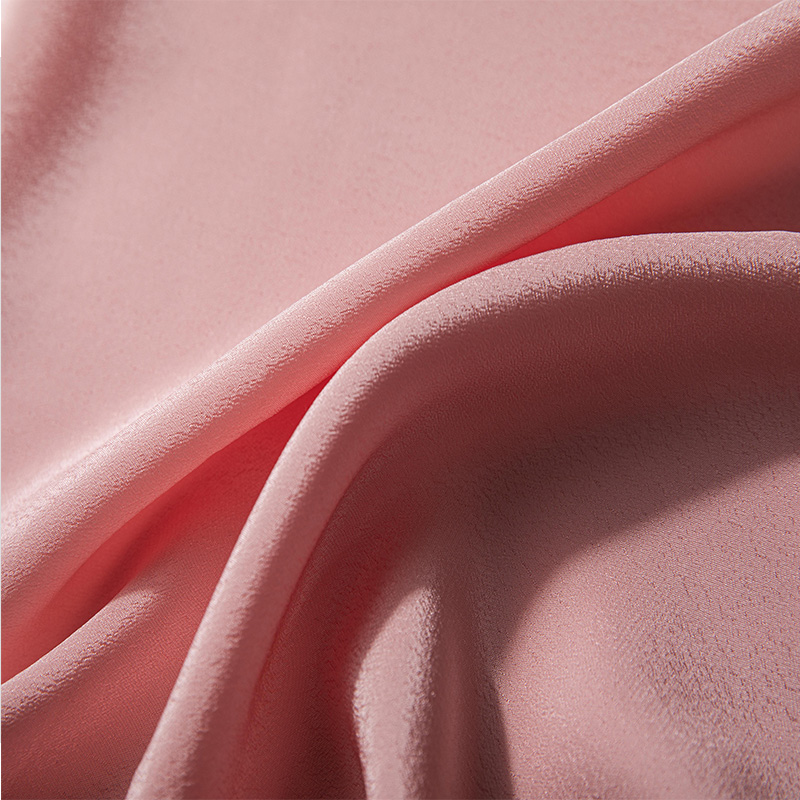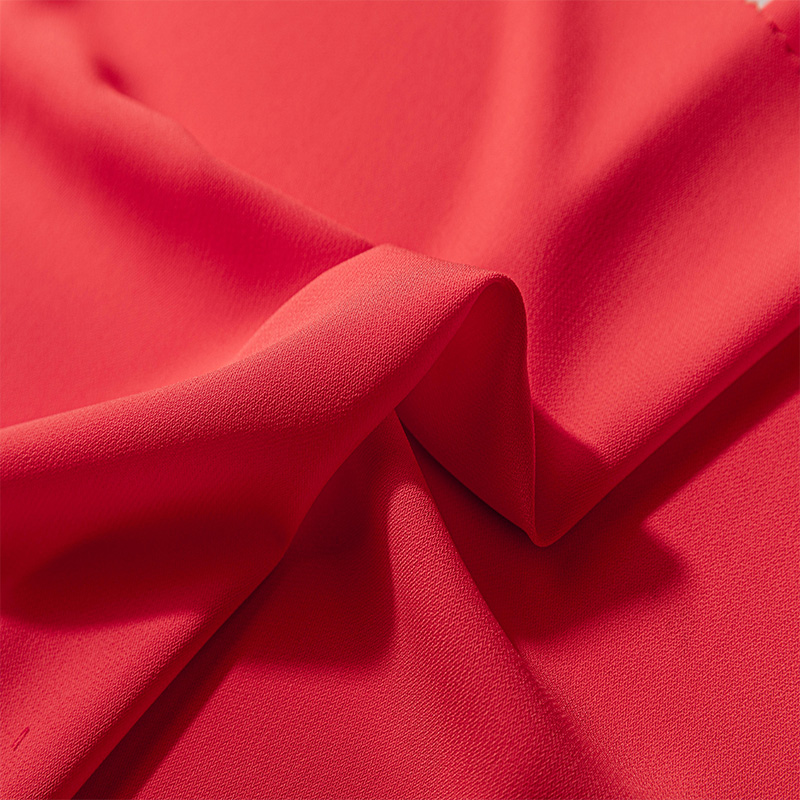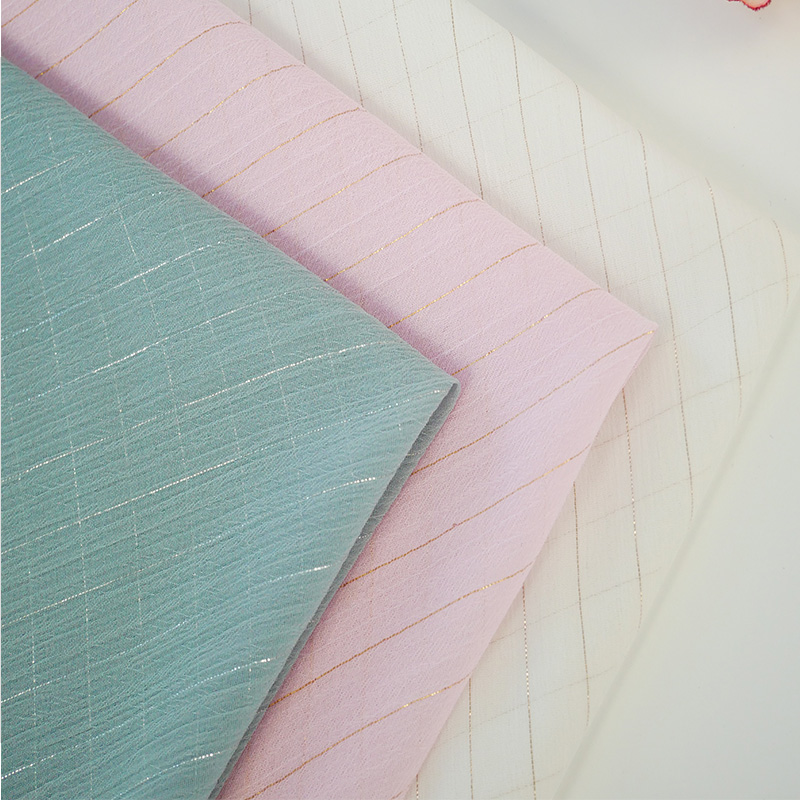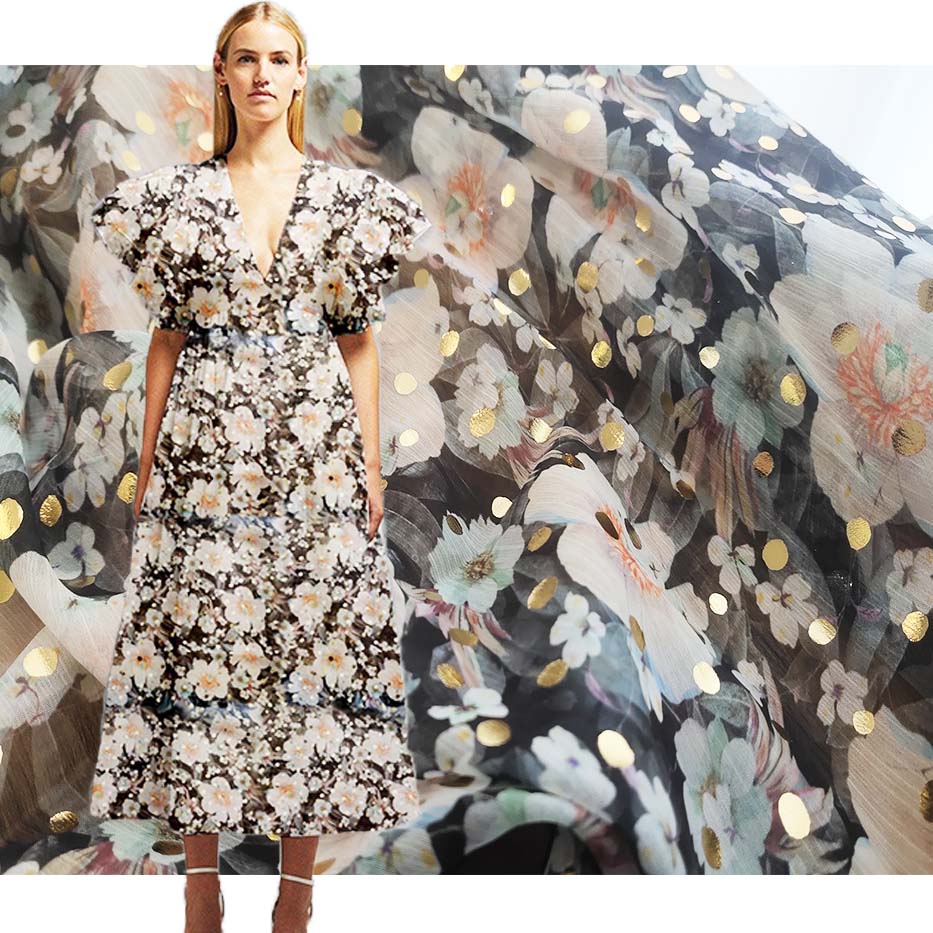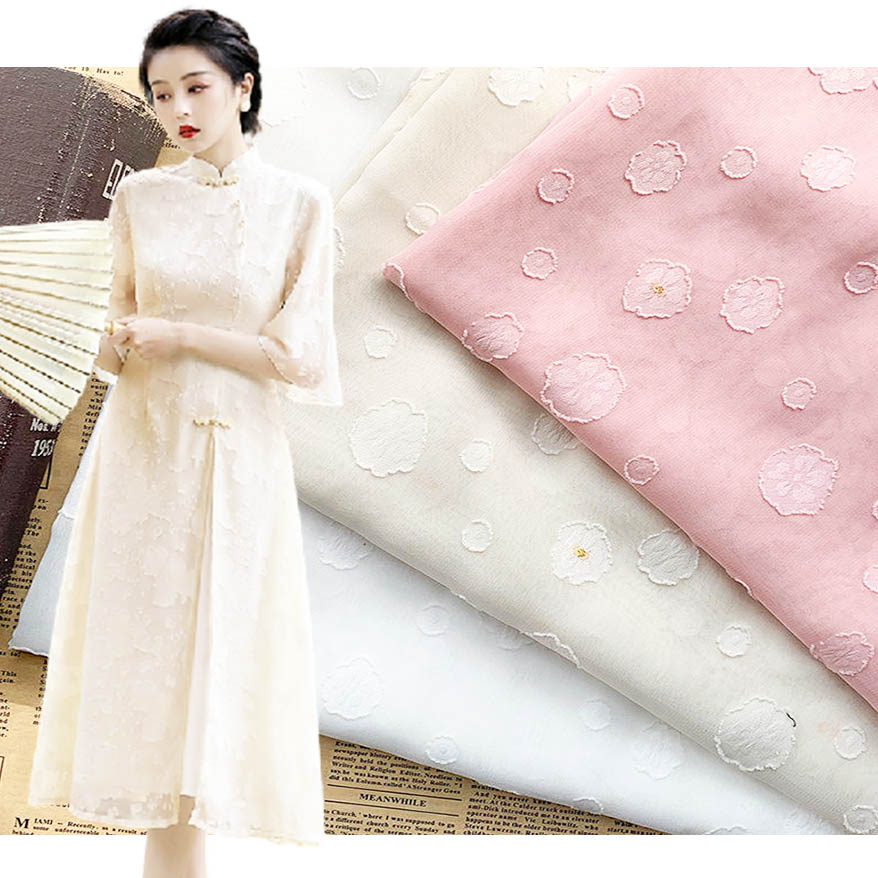What kind of fabric is chiffon? What are the advantages and disadvantages of chiffon fabrics?
Composition: Silk (mulberry silk) and chemical fiber.
Weave: generally plain; there are also variable weaves.
Density: relatively low.
When it comes to dyeing, various chemical fiber disperse dyes and silk acid dyes are typically used.
Georgette, also known as chiffon, is a type of fabric woven from strong twisted crepe warp and crepe weft silk threads. It comes in different varieties, including interwoven georgette, and has a light, transparent, soft, and elastic texture that gives it a delicate and elegant appearance. The fabric is breathable, drapes well, and is comfortable to wear, making it a stylish and practical choice for clothing.
Advantages of chiffon:
Chiffon fabric is a popular choice for its delicate, weightless texture, soft and stretchy feel, and sheer appearance. It has a graceful and airy look that allows air to circulate freely, and it falls beautifully. The fitted top part of chiffon clothing is both comfortable and stylish, giving off a refined and sophisticated vibe. Additionally, chiffon is highly long-lasting and does not easily pill, while its stable size helps prevent crumpling. It is also colored with eco-friendly materials and treated to resist static. In summary, chiffon fabric brings a touch of sophistication and femininity to women's clothing, making it a highly desirable option.
Disadvantages of chiffon:
Although the chiffon fabric is soft, elegant, and loose, it will sag and deform due to its poor drooping feeling, and it is easy to snag. It will turn yellow, the fabric is not very firm, it is easy to stretch the yarn, and the seam is easy to tear.
1. Chiffon is classified into silk chiffon and imitation silk chiffon;
2. Silk chiffon is crafted entirely from mulberry silk and offers numerous benefits for prolonged wear, including its cooling and breathable properties and excellent moisture absorption. These qualities are unique to genuine silk chiffon and cannot be replicated by imitation versions. However, there are also some drawbacks to real silk chiffon. For instance, it tends to lose its color and become lighter after frequent washing, cannot be exposed to direct sunlight, requires extra care and maintenance, and is not as durable as other materials.
3. Imitation silk chiffon is typically made of 100% polyester and has a light, soft texture with a natural drape that is gentle on the skin. Despite being a synthetic fiber, it doesn't easily fade after washing and can withstand exposure to sunlight. It's also easy to care for and has a good level of durability.
Identification of chiffon
1. To determine if a piece of fabric is real chiffon or fake, cut a small piece and burn it with a lighter. Real chiffon will emit white smoke and a burning hair odor, and the ashes will break and scatter. Fake chiffon will emit a sweet smell due to the polyester content, and if it remains intact after burning, you can assess the ingredients by touching it.
2. To observe the appearance of a silk sample, it should be spread flat. Real silk has properties that absorb light, giving it a smooth appearance without looking like a mirror surface. The silk's luster is elegant and soft, displaying a pearly light. The higher the density of the silk, the better it feels. Even though imitation silk fabric may feel softer after hardening treatment, it will have a greasy feeling. Poor quality imitation silk will feel unpleasant after sweating and lack the pearly luster of real silk. Chemical fiber fabrics have a bright luster but feel harsh to the touch.
Maintenance of Chiffon
1. Be careful not to get wet. If it is partially wet, simply soak and wash, and finally stretch and iron to avoid shrinkage. Drip dry naturally after washing, do not wring dry
2. Don't hang the beaded dress in the closet for a long time, otherwise, the soft and loose chiffon will sag and deform
3. The thickly decorated chiffon is best placed flat in the closet so that it is not easy to deform
4. Chiffon dresses that have been worn once should not be placed in plastic pockets. It is best to put them in fabric pockets, which are breathable and will not be contaminated with dust
5. Hang the chiffon clothes with sleeves on a hanger. It is best to use a hanger made of fabric or wrap the two ends of the hanger with a small towel so that the sleeves will not be deformed. Pay attention to long distances when spraying perfume. so as not to leave macula
6. If the chiffon clothes are stained with red wine or grease at the banquet, there are two tricks to solve it
Use a paper towel to absorb it first, then find soybean powder or flour, absorb the moisture on the surface, and then gently blow off the powder, the stain will be absorbed naturally
② It is more effective to wipe off the stains with soda water

